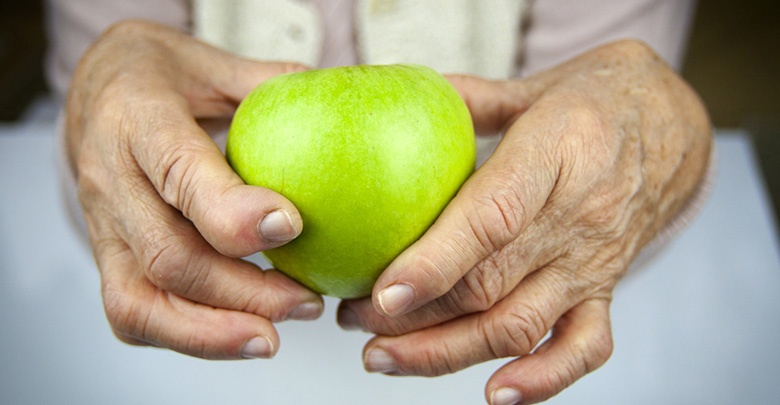
With over 200 different types, “arthritis” is a broad ranging term…
Arthritis is a broad description of inflammation in one or more joints in the body. Arthritis, in actual fact, refers to more than 200 different conditions with the main symptom being joint pain and stiffness.
USE the OMH exclusive code "HEALTH15" to Save 15%The six most common types of arthritis are:
- Osteoarthritis
- Rheumatoid arthritis
- Gout
- Fibromyalgia
- Psoriatic arthritis
- Lupus
Talking about the two most common forms of arthritis, there is an important differentiation between osteoarthritis and rheumatoid arthritis.
Osteoarthritis
In osteoarthritis the joint cartilage is mainly affected. Joint cartilage is a protective layer of tissue which lines the ends of the bones where they move against other bones thereby forming a smoothly moving joint.
When someone has osteoarthritis the joint cartilage has started to break down and it gradually degenerates further as time progresses, eventually causing damage to the underlying bone and other structures in the joint.
Causes of osteoarthritis
The cartilage damage usually originates from various pre-existing conditions such as:
- previous injuries (eg: torn knee ligaments) structural misalignment (eg: being knock kneed or bow-legged)
- excessive stress and strain on the joints (eg: from previous extreme sports such as football or marathon running)
- or from being overweight.
Rheumatoid arthritis
Rheumatoid arthritis, on the other hand, is an autoimmune disease which causes chronic inflammation within the joints, and it affects many joints. This auto-immune triggered inflammation results in cartilage damage, ligament damage, and also damage to the lining of the joint – called the synovium.
This differentiation between osteoarthritis and rheumatoid arthritis is crucially important for the therapeutic approach. The differential diagnosis will be performed by physicians such as GPs, rheumatologists and orthopaedic surgeons.
Other types of arthritis
If osteoarthritis or rheumatoid arthritis cannot be diagnosed, in someone suffering from joint pain, then other arthritis conditions such as gout, lupus, fibromyalgia, or psoriasis (to name but a few) should be considered as possible causes. It is important to consult your doctor who can refer you to a physican or rheumatologist in order to get an accurate diagosis and proper treatment for these conditions.
Treatment, development and remission
Treatments of arthritis conditions vary according to the type of arthritis that has been diagnosed. Generally speaking the treatment is aimed at reducing the symptoms and improving mobility, activity level and overall function and quality of life. Reducing the symptoms includes methods of pain relief and pain control, as well as minimizing and preventing long term joint damage. This usually means the administration of painkillers or anti-inflammatory medications. Physical therapy, education, weight loss and life style changes are crucial factors in all arthritis management.
In cases where osteoarthitis is severe, and the limitations it causes in daily life and on normal everyday functioning are unmanageable by conservative means, surgery aimed at cartilage reconstruction, or even joint replacement may be necessary and recommended.
OhMy.health is here to help you and to support you, in order to optimize elements such as your physio based rehabilitation; your training programme and your lifestyle changes when living with arthritis. We believe that with the right approach and some adjustments to your lifestyle you can achieve great results! You will feel much better, and you will be able to stay active and live a healthier, happier and more balanced life.